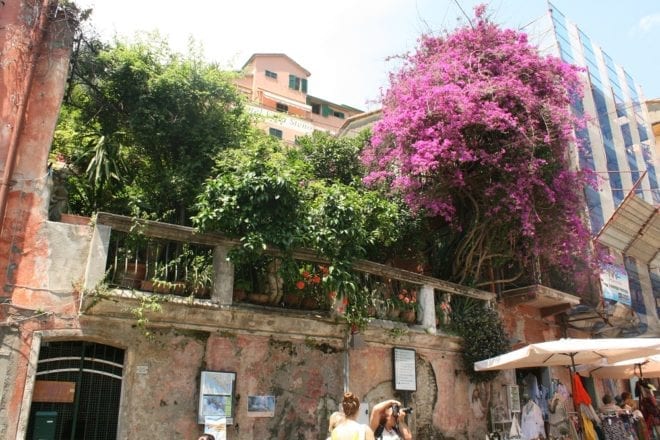Crime mystery novel set in EASTBOURNE
Author Marilyn Baron shares her love of Italy and Greece
27th February 2018
#TalkingLocationWith… author Marilyn Baron shares her love of Italy and Greece.
Florence/ Cinque Terre, Italy and Chania, Crete, Greece
I love to travel and set most of my books in places I’ve visited. I’ve set three romantic thrillers in foreign locales: Under the Moon Gate (Bermuda, where I’ve vacationed 12 times); Stumble Stones: A Novel (Berlin), inspired by the real-life Stumble Stones memorial project, where gleaming brass markers are set into pavements of sidewalks at the last known address of Holocaust victims; and my latest book, released in January 2018, The Siege: A Novel, set in Florence, Italy, and Chania, on the Greek island of Crete. Setting is always like a character in my books.

In my senior year of college, I studied abroad in Florence, Italy, for six months. It was there I fell in love with the country and I’ve been back for business and pleasure numerous times. Many memories from my college days help bring Florence alive to readers, especially reference to my favorite painting, Sandro Botticelli’s The Birth of Venus in the Uffizi Gallery. I studied art history and Greek and Roman mythology in Florence and my love of both subjects came through since my novel’s heroine is an artist.

The Siege, a contemporary woman’s fiction, features a young woman who travels to Chania, Crete, to find out more about the grandfather she never knew, a promising artist who studied under Chagall in France, but never survived the war. It transports the reader back in time to World War II Crete, so it has historical elements and it is also a thriller (when the book opens, the hero and heroine are trapped in his honeymoon suite during a terrorist attack on their hotel in Florence, Italy).
Many years later, my husband and I took a Greek Island cruise. At the time, I wasn’t an author, but when I got inspired to write The Siege: A Novel, I decided to set my book in Italy and Greece.
I visited many of the Greek Islands, including Crete and Rhodes. On Crete, I remember an excursion to the ancient Minoan Palace at Knossos in Crete and the myth of the Minotaur—half-man, half-bull, said to have been imprisoned by King Minos in a labyrinth at the palace. But the experience that made the biggest impression on me was a visit to a synagogue on Rhodes. There, a female Holocaust survivor guided us through the building to a back room with a Memory Wall (archives in what is now called the Jewish Museum of Rhodes) displaying a series of haunting photographs—pictures of a smiling bride and groom, laughing children, families in happier times. These were sent from around the globe by families that left the island before the war, evidence that the far-flung Jewish community from Greece was still thriving.

My memories of those two islands blurred, but I decided to set my fictional story on Crete, inspired by the tragic real-life story of what happened to the Jews of Crete. Almost the entire Jewish population of Crete (including 100 children) herded in the cargo hold of a requisitioned German merchant vessel, the Tanais, on its way to Auschwitz, was mistakenly sunk by British torpedoes, sending all on board to a watery grave. Today there are only a dozen Jews left in Crete.

I recognized one of the names on the Memory Wall as a family I knew back in Atlanta. When I decided to write The Siege, I interviewed the man whose family was from Rhodes, and who generously shared their story about emigrating from the island, memories of his visit to Rhodes and life in the Sephardic Jewish community.

Cinque Terre
In the novel, when the hero and heroine were in Florence, I referenced an excursion I had recently taken on a Mediterranean cruise to Cinque Terre. What struck me about Cinque Terre were the sweeping vistas—spectacular coastline scenery at every turn by land or by sea—the beautiful beaches, the quaint cliffside villages, terraced vineyards, riotous blooms of the hydrangeas and the royal purple bougainvillea plants, the churches, laundry drying on the line above the balconies, peeling stucco on pastel buildings, the gelato, and the best spaghetti con vongele I’ve ever tasted at a trattoria in Monterosso al Mare.
 Thank you so much to Marilyn for her wonderful insights! You can follow her on Twitter, Facebook and via her website.
Thank you so much to Marilyn for her wonderful insights! You can follow her on Twitter, Facebook and via her website.
Do come and join team TripFiction on Social Media:
Twitter (@TripFiction), Facebook (@TripFiction.Literarywanderlust), YouTube (TripFiction #Literarywanderlust), Instagram (@TripFiction) and Pinterest (@TripFiction)

 Please wait...
Please wait...

Where would we be without books and travel? I love the concept of tripfiction.com and am so thrilled and honored to be featured here. Thank you.
1 Comment
You are very welcome, lovely to have you on the website and blog!